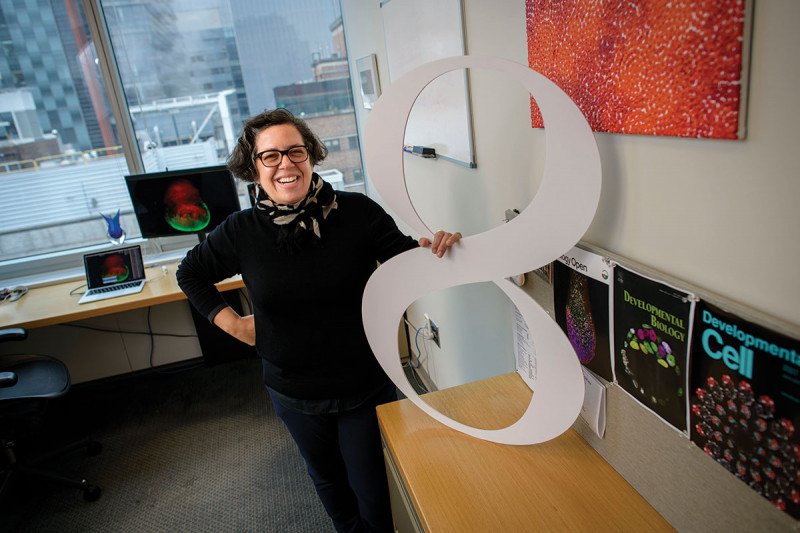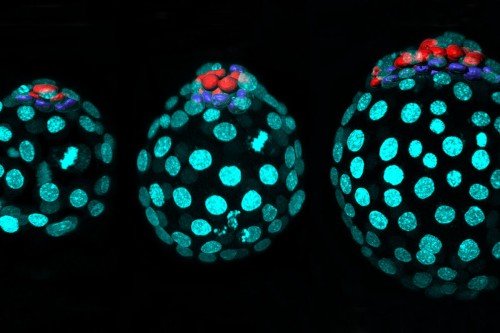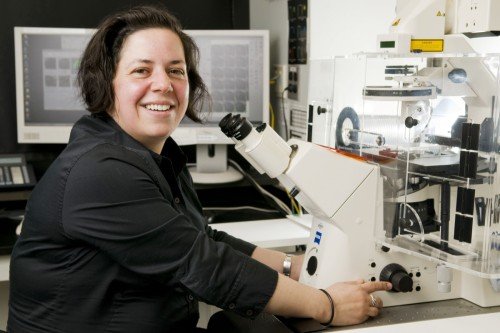
Earlier this year, Anna-Katerina “Kat” Hadjantonakis was named Chair of the Sloan Kettering Institute’s Developmental Biology Program. She succeeded Kathryn Anderson, who had led the program since it launched in 2003.
We spoke with Dr. Hadjantonakis about the field of developmental biology and how she got interested in this area of research.
What is developmental biology, and what does it have to do with cancer?
Developmental biologists study the genes, proteins, and other biological phenomena that control how cells multiply, change their identity, and reorganize themselves to give rise to different tissues and organs. This provides a blueprint to understand how our bodies form.
Cancer happens when normal developmental processes go awry. To learn how to fix them, you first need to know how they’re supposed to work.
Developmental biology also includes stem cell research, which is very important right now. Stem cells may be useful to regrow or repair tissues that have been lost or damaged due to disease. They are also used to make organoids, which are like miniature organs we can study in the lab.
What is the focus of your research?
My lab uses primarily mammalian models to learn how cells know what to become and how groups of these cells generate the blueprints of organs. We study tissue called the endoderm, which becomes organs, including the lungs, liver, and pancreas. We study how endodermal cells give rise to distinct organs with different functions.
Did you always know you wanted to be a scientist?
I went to school in the UK, and the education system requires that you narrow down your interests early. I excelled at biology and math, so I decided to go in that direction. I also excelled at fine art, especially photography, but sadly was unable to pursue that interest in parallel. I’m dyslexic and have always been better with processing images than words. I did my undergraduate and PhD degrees at Imperial College London. I’ve now come full circle because my lab uses a lot of microscopy, an adaptation of photography.
What led you to MSK?
When I was a postdoc at Columbia University, I met Kathryn at a meeting on mouse genetics. She told me MSK was creating the Developmental Biology Program and that I should consider applying. I was the first person hired after the program started.
Now that you’re Chair of the program, what are your plans for it?
Our first goal is to recruit three or four junior faculty members who will be leaders in their fields. We want people who work on the cutting edge of research, address important unsolved problems, and are collaborative and good institutional citizens. Kathryn is a true role model, and it’s fabulous that she’s staying on as faculty. I have some big shoes to fill.
Where in the UK did you grow up?
I grew up in London, but both of my parents were Greek. Even though I sound British, I have a long, unpronounceable Greek name. Growing up, I used to visit Greece every summer. I speak Greek, but with a British accent.
Do you still make art?
I don’t have time to practice art, but I live in the Chelsea neighborhood, the nexus of many art galleries. So I try to take advantage of those cultural opportunities.
What are your other hobbies?
Listening to music. I used to have a subscription to the Metropolitan Opera, but I relinquished it. Their performances started too early. My schedule is unpredictable, and I often failed to make it across town in time after work.
I cycle as much as I can. I see it as an efficient mode of transport and a decent form of exercise — a surrogate for not getting to the gym as often as perhaps I should! I ride a Citi Bike to work, weather permitting. When I first came to New York, I was petrified to ride here. I used to cycle in London and in Toronto, where I trained. The city has done a lot with building bike lanes and raising awareness of cyclists. I’m now brave enough to venture onto the streets.






